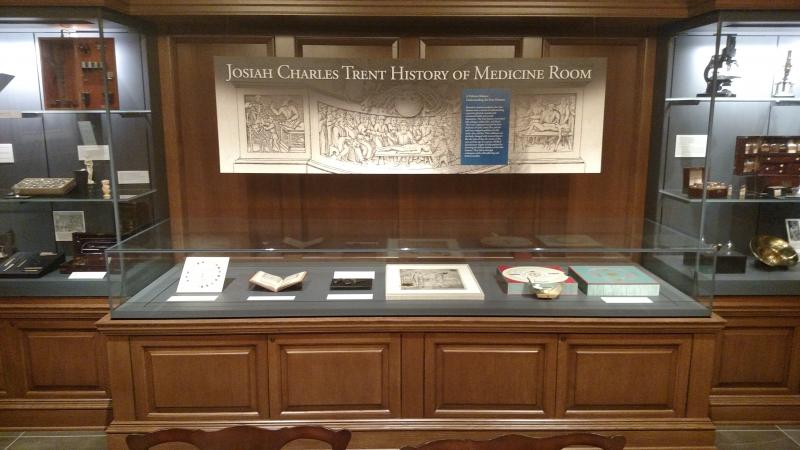Understanding the Four Humors
The four humors were a means of analyzing a person’s disposition as well as her physical, mental, and emotional health. Within this belief system, every person had a unique humoral composition that shaped her behavior, appearance, and interactions with the broader world. Visualized as bodily fluids whose levels were constantly in flux, Hippocrates named the four humors black bile, phlegm, yellow bile, and blood. Each humor was paired with one of the four elements of earth, water, fire, and air and was assigned qualities of cold, moist, dry, and hot. Their influence on the body changed with external factors like the time of day, the season of the year, and the age of a person.
This exhibition case in the Josiah Charles Trent History of Medicine Room is a glimpse into the rich history of the four humors and their impact on medical practices in the Early Modern period through today, for more information check out this blog post.
This exhibition was sponsored in part by the E. Rhodes and Leona B. Carpenter Foundation.



